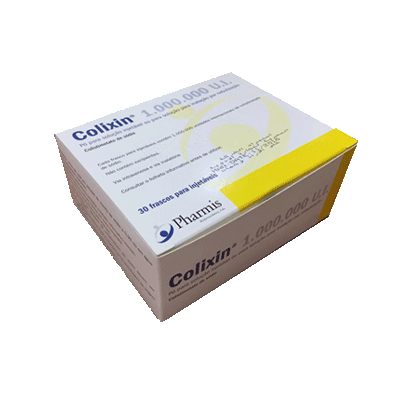Description
Description
Active ingredient: Amphotericin B
Each vial contains amphotericin B 50,000 units (50 mg).
Powder for Concentrate for Solution for Infusion (Powder for Sterile Concentrate).
FUNGIZONE (named in Germany as Amphotericin B )
is the brand innovator for Amphotericin B – FDA approved.
Indications:
Fungizone should be administered primarily to patients with progressive, potentially fatal infections. This potent drug should not be used to treat the common forms of fungal disease which show only positive skin or serological tests.
Fungizone is specifically intended to treat cryptococcosis (torulosis); North
American blastomycosis; the disseminated forms of candidosis, coccidioidomycosis and histoplasmosis; mucormycosis (phycomycosis) caused by species of the genera Mucor, Rhizopus, Absidia, Entomophthora, and Basidiobolus sporotrichosis (Sporotrichum schenckii), aspergillosis (Aspergillus fumigatus).
Amphotericin B may be helpful in the treatment of American mucocutaneous leishmaniasis but is not the drug of choice in primary therapy.
N.B : Non-equivalence of amphotericin products
Different amphotericin products (sodium deoxycholate, liposomal, lipid complex) are not equivalent in terms of pharmacodynamics, pharmacokinetics and dosing and so the products should not be used interchangeably without accounting for these differences. Both the trade name, common name and dose should be verified pre-administration.
Under no circumstances should a total daily dose of 1.5 mg/kg be exceeded. Fungizone overdoses can result in potentially fatal cardiac or cardiorespiratory arrest.
Dosage and route of administration
Posology
Fungizone should be administered by intravenous infusion over a period of 2-6 hours. Reduction of the infusion rate may reduce the incidence of side-effects. Initial daily dose should be 0.25 mg/kg of body weight gradually increasing to a level of 1.0 mg/kg of body weight depending on individual response and tolerance. Within the range of 0.25-1.0 mg/kg the daily dose should be maintained at the highest level which is not accompanied by unacceptable toxicity.
In seriously ill patients the daily dose may be gradually increased up to a total of 1.5 mg/kg. Since amphotericin B is excreted slowly, therapy may be given on alternate days in patients on the higher dosage schedule. Several months of therapy are usually necessary; a shorter period of therapy may produce an inadequate response and lead to relapse.
When commencing all new courses of treatment, it is advisable to administer a test dose immediately preceding the first dose. A volume of the infusion containing 1 mg (i.e. 10 mL) should be infused over 20-30 minutes and the patient carefully observed for at least a further 30 minutes. It should be noted that patient responses to the test dose may not be predictive of subsequent severe side effects.
Patients with a severe and rapidly progressing fungal infection, with good cardiopulmonary function and who tolerates the test dose without a severe reaction, may then receive 0.3 mg/kg amphotericin B intravenously over a period of 2 to 6 hours. For patients with cardiopulmonary impairment or severe reaction to the test dose, a lower dose (i.e. 5 to 10 mg) is recommended.
Doses may gradually be increased by 5 to 10 mg per day to a final daily dosage of 0.5 to 1 mg/kg.
Whenever medication is interrupted for a period longer than seven days, therapy should be resumed by starting with the lowest dosage level, i.e. 0.25 mg/kg of body weight and increased gradually.
The recommended concentration for intravenous infusion is 10 mg/100 mL.
Paediatric population
Safety and effectiveness in paediatric patients have not been established through adequate and well-controlled studies. Systemic fungal infections have been treated in paediatric patients with reports of side effects similar to those seen in adults.
Older people
No specific dosage recommendations or precautions.
The use of Fungizone by other routes has been documented in the published literature:
Bladder irrigation/instillation (e.g. candiduria):
Continuous irrigation with 50 mg Fungizone in 1 litre sterile water each day until urinary cultures are negative. Intermittent use of volumes of 100-400 mL (concentrations of 37.5-200 mcg/mL) has also been reported. The urine should be alkalinised (with potassium citrate) and antifungal ointment applied to the perineal area.
Lung inhalation (e.g. pulmonary aspergillosis):
8-40 mg amphotericin B (nebulised in sterile water or 5% Glucose) has been given daily in divided doses. Concurrent eradication of oral and intestinal yeast reservoirs is recommended.
Intrathecal (e.g. coccidiodal meningitis):
Patients who do not respond to fluconazole or itraconazole would be candidates for intrathecal amphotericin B therapy with or without continuation of azole treatment. The intrathecal dosage of amphotericin B normally ranges between 0.1 mg and 1.5 mg per dose, administered at intervals ranging from daily to weekly, beginning at a low dosage and increasing the dosage until the appearance of patient intolerance. Amphotericin B is irritating when injected into the CSF.
Other:
Other uses of solutions prepared using Fungizone include local instillations for the treatment of fungal infections of the ear, eye, peritoneum, lung cavities and joint spaces.
Method of administration
By Infusion





